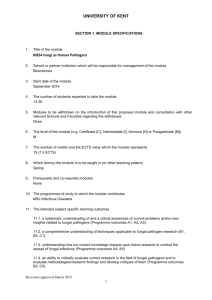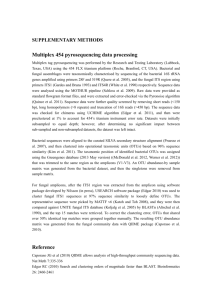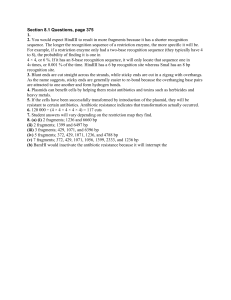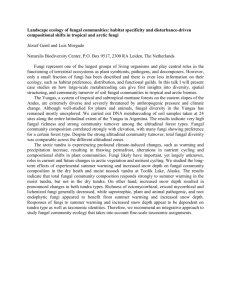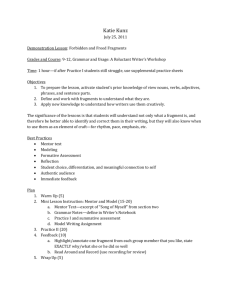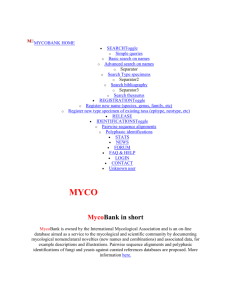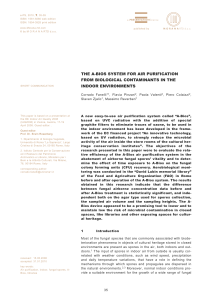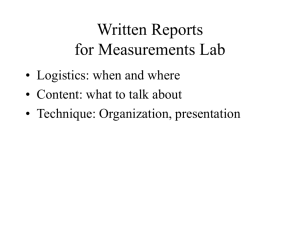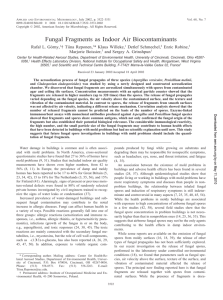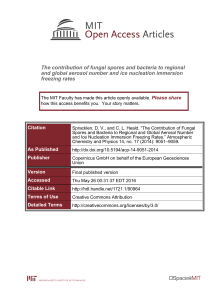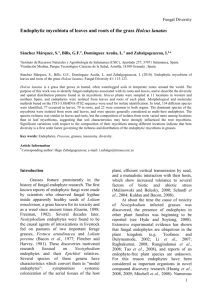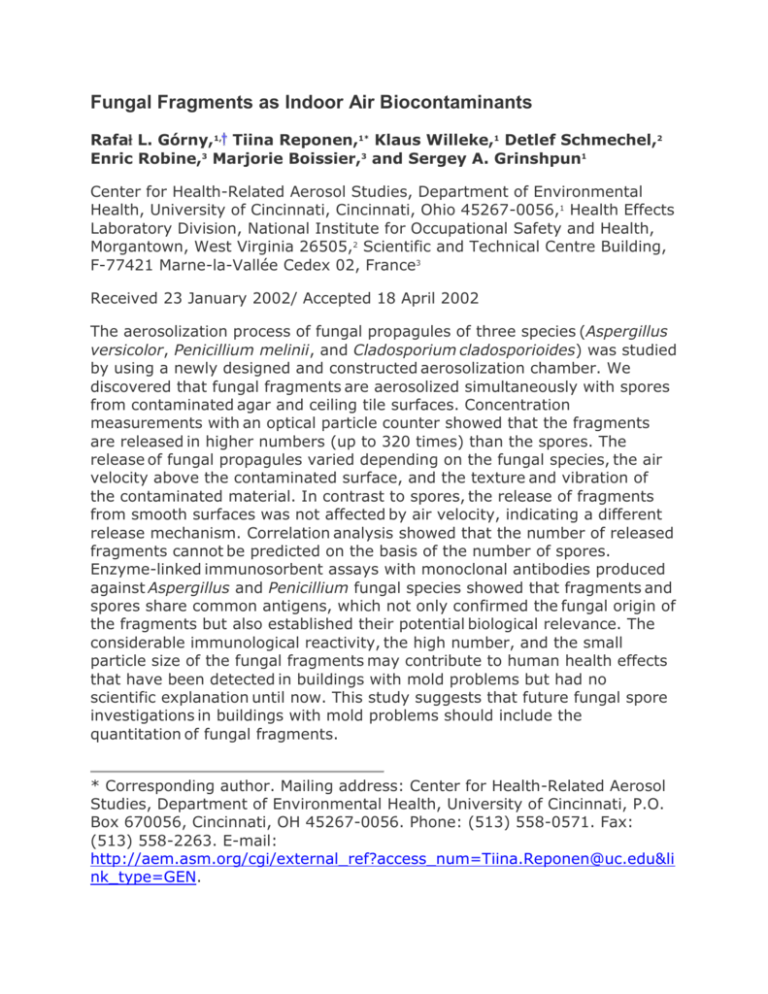
Fungal Fragments as Indoor Air Biocontaminants
Rafa L. Górny,1, Tiina Reponen,1* Klaus Willeke,1 Detlef Schmechel,2
Enric Robine,3 Marjorie Boissier,3 and Sergey A. Grinshpun1
Center for Health-Related Aerosol Studies, Department of Environmental
Health, University of Cincinnati, Cincinnati, Ohio 45267-0056,1 Health Effects
Laboratory Division, National Institute for Occupational Safety and Health,
Morgantown, West Virginia 26505,2 Scientific and Technical Centre Building,
F-77421 Marne-la-Vallée Cedex 02, France3
Received 23 January 2002/ Accepted 18 April 2002
The aerosolization process of fungal propagules of three species (Aspergillus
versicolor, Penicillium melinii, and Cladosporium cladosporioides) was studied
by using a newly designed and constructed aerosolization chamber. We
discovered that fungal fragments are aerosolized simultaneously with spores
from contaminated agar and ceiling tile surfaces. Concentration
measurements with an optical particle counter showed that the fragments
are released in higher numbers (up to 320 times) than the spores. The
release of fungal propagules varied depending on the fungal species, the air
velocity above the contaminated surface, and the texture and vibration of
the contaminated material. In contrast to spores, the release of fragments
from smooth surfaces was not affected by air velocity, indicating a different
release mechanism. Correlation analysis showed that the number of released
fragments cannot be predicted on the basis of the number of spores.
Enzyme-linked immunosorbent assays with monoclonal antibodies produced
against Aspergillus and Penicillium fungal species showed that fragments and
spores share common antigens, which not only confirmed the fungal origin of
the fragments but also established their potential biological relevance. The
considerable immunological reactivity, the high number, and the small
particle size of the fungal fragments may contribute to human health effects
that have been detected in buildings with mold problems but had no
scientific explanation until now. This study suggests that future fungal spore
investigations in buildings with mold problems should include the
quantitation of fungal fragments.
* Corresponding author. Mailing address: Center for Health-Related Aerosol
Studies, Department of Environmental Health, University of Cincinnati, P.O.
Box 670056, Cincinnati, OH 45267-0056. Phone: (513) 558-0571. Fax:
(513) 558-2263. E-mail:
http://aem.asm.org/cgi/external_ref?access_num=Tiina.Reponen@uc.edu&li
nk_type=GEN.
Permanent address: Institute of Occupational Medicine and Environmental
Health, 41-200 Sosnowiec, Poland.
Applied and Environmental Microbiology, July 2002, p. 3522-3531, Vol. 68, No. 7
0099-2240/02/$04.00+0
DOI: 10.1128/AEM.68.7.3522-3531.2002
Copyright © 2002, American Society for Microbiology. All Rights Reserved.



